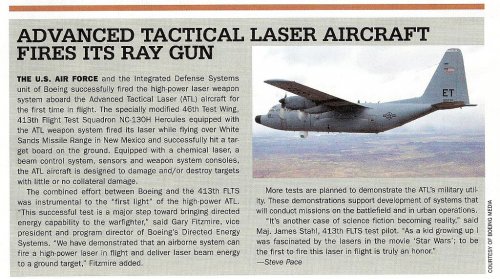- Joined
- 21 April 2009
- Messages
- 13,551
- Reaction score
- 7,153
From Global Security Newswire:
Giant Laser Shot Creates Nuclear Fusion Conditions
Thursday, Jan. 28, 2010
A massive laser system at the Lawrence Livermore National Laboratory in California created the conditions necessary for nuclear fusion when it concentrated an unprecedented level of energy on a target within several billionths of a second, the U.S. National Nuclear Security Administration said yesterday (see GSN, Dec. 11. 2009).
In the test at the laboratory's National Ignition Facility, 192 giant lasers fired more than one megajoule of energy -- more than 30 times the amount of energy ever fired by another laser array -- at a tiny, spherical target containing deuterium and tritium. The process generated levels of heat and pressure similar to conditions inside the sun, causing the hydrogen isotopes to fuse and release more energy than the amount released by the lasers.
The process could help measure the safety and reliability of weapons in the U.S. nuclear stockpile, but it might also have energy and other applications, NNSA administrator Thomas D'Agostino said in a press release.
"This accomplishment is a major milestone that demonstrates both the power and the reliability of NIF’s integrated laser system, the precision targets and the integration of the scientific diagnostics needed to begin ignition experiments,” Ed Moses, the facility's director, said in the statement.
“NIF has shown that it can consistently deliver the energy required to conduct ignition experiments later this year,” Moses said (U.S. National Nuclear Security Administration release, Jan. 27).
Giant Laser Shot Creates Nuclear Fusion Conditions
Thursday, Jan. 28, 2010
A massive laser system at the Lawrence Livermore National Laboratory in California created the conditions necessary for nuclear fusion when it concentrated an unprecedented level of energy on a target within several billionths of a second, the U.S. National Nuclear Security Administration said yesterday (see GSN, Dec. 11. 2009).
In the test at the laboratory's National Ignition Facility, 192 giant lasers fired more than one megajoule of energy -- more than 30 times the amount of energy ever fired by another laser array -- at a tiny, spherical target containing deuterium and tritium. The process generated levels of heat and pressure similar to conditions inside the sun, causing the hydrogen isotopes to fuse and release more energy than the amount released by the lasers.
The process could help measure the safety and reliability of weapons in the U.S. nuclear stockpile, but it might also have energy and other applications, NNSA administrator Thomas D'Agostino said in a press release.
"This accomplishment is a major milestone that demonstrates both the power and the reliability of NIF’s integrated laser system, the precision targets and the integration of the scientific diagnostics needed to begin ignition experiments,” Ed Moses, the facility's director, said in the statement.
“NIF has shown that it can consistently deliver the energy required to conduct ignition experiments later this year,” Moses said (U.S. National Nuclear Security Administration release, Jan. 27).

